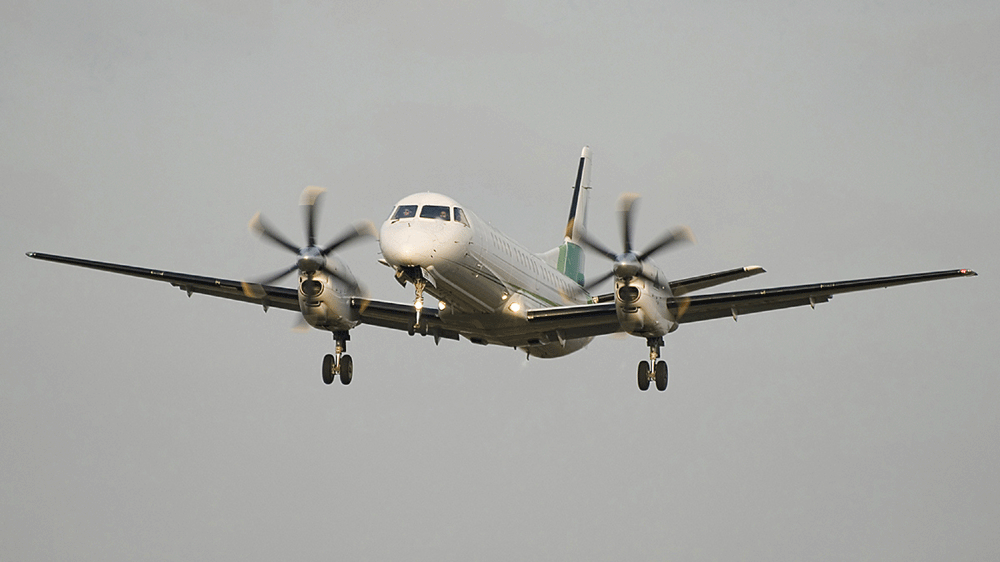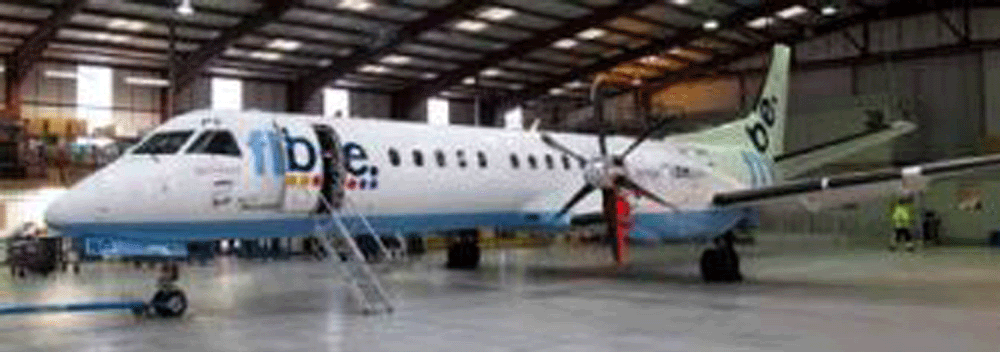A PASSENGER aircraft plunged to within 1,000ft of the ground after it was struck by lightning.
The FlyBe plane – with 30 passengers on board – was about to land in Shetland when it went into a terrifying dive which hit 9,500 ft-per-minute.
An official report into the incident reveals that the near-disaster was caused by the pilot battling with the autopilot, which he wrongly believed had been switched off.
The Air Accidents Investigation Branch (AAIB) report examined the Aberdeen to Sumburgh flight of a SAAB 2000 turboprop on December 15, 2014.
According to the AAIB, the aircraft was close to landing and at an altitude of 2,000ft when the lightning struck.
The pilot wrongly believed that the strike had disconnected the autopilot and that he was in control of the aircraft.
The subsequent battle for control between the pilot and the autopilot saw the plane climb to 4,000ft before plunging to 1,000ft, when the pilot finally gained control.

The dive reached a maximum rate, said the AAIB, of 9,500ft-per-minute which is three to four times the normal rate of descent.
The report states: “The lightning strike caused the commander to utter an expletive and cease transmitting to air traffic control.
“The commander’s actions following the lightning strike were to make manual inputs on the flying controls, which appear to have been instinctive and may have been based on his assumption that the autopilot would disconnect when lightning struck.”
As a result, the aircraft was trying to fly at 2,000ft while the pilot was attempting to pull the nose up and climb.
“The autopilot’s nose-down…authority exceeded the commander’s…nose-up authority and the aircraft pitched nose-down and descended, reaching a peak descent rate of 9,500 ft/min,” stated the report.

The autopilot eventually disengaged owing to a fault allowing the pilot to take over. “The aircraft started to pitch up just before reaching a minimum height of 1,100 ft above sea level,” said the report.
The report states that the pilot may have experienced “cognitive tunneling”.
This where individuals focus only on what they regard to be the most important information, supporting their idea of what is happening in the situation.
According to the report this could be why the pilot did not spot signs that the autopilot was still engaged.
But the report also notes: “There were indications of an increase in stress evident in the commander’s actions before the lightning strike.”
The report has resulted in a number of safety recommendations being made.
They include a recommendations to modify autopilot system which currently have to be deliberately switched off.
The report states that the system should be changed so that “the auto pilot automatically disengages when the flight crew applies a significant override force to the flight controls”.
On average, every commercial plane is struck by lightning around once a year according to research conducted at Cardiff University.
When this occurs, the bolt will usually hit a peripheral part of the plane, such as a wing tip, and the current will travel through the plane’s shell before leaving from another point.
Modern aircraft are made from lightweight carbon composite covered with a thin layer of copper, which act as Faraday cage. This means that the space inside the metal is protected from electric currents.

